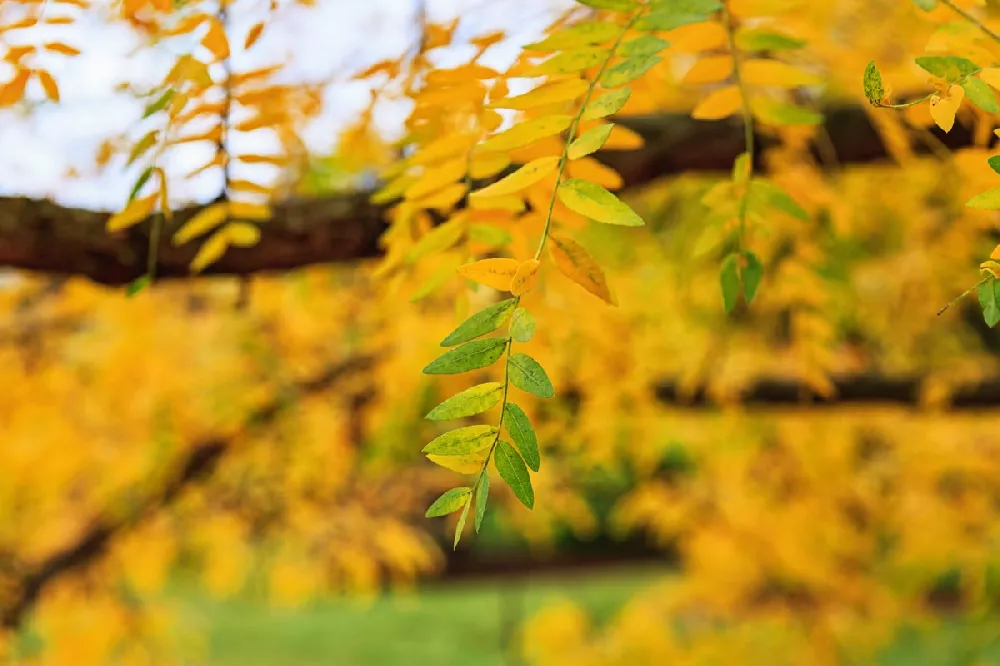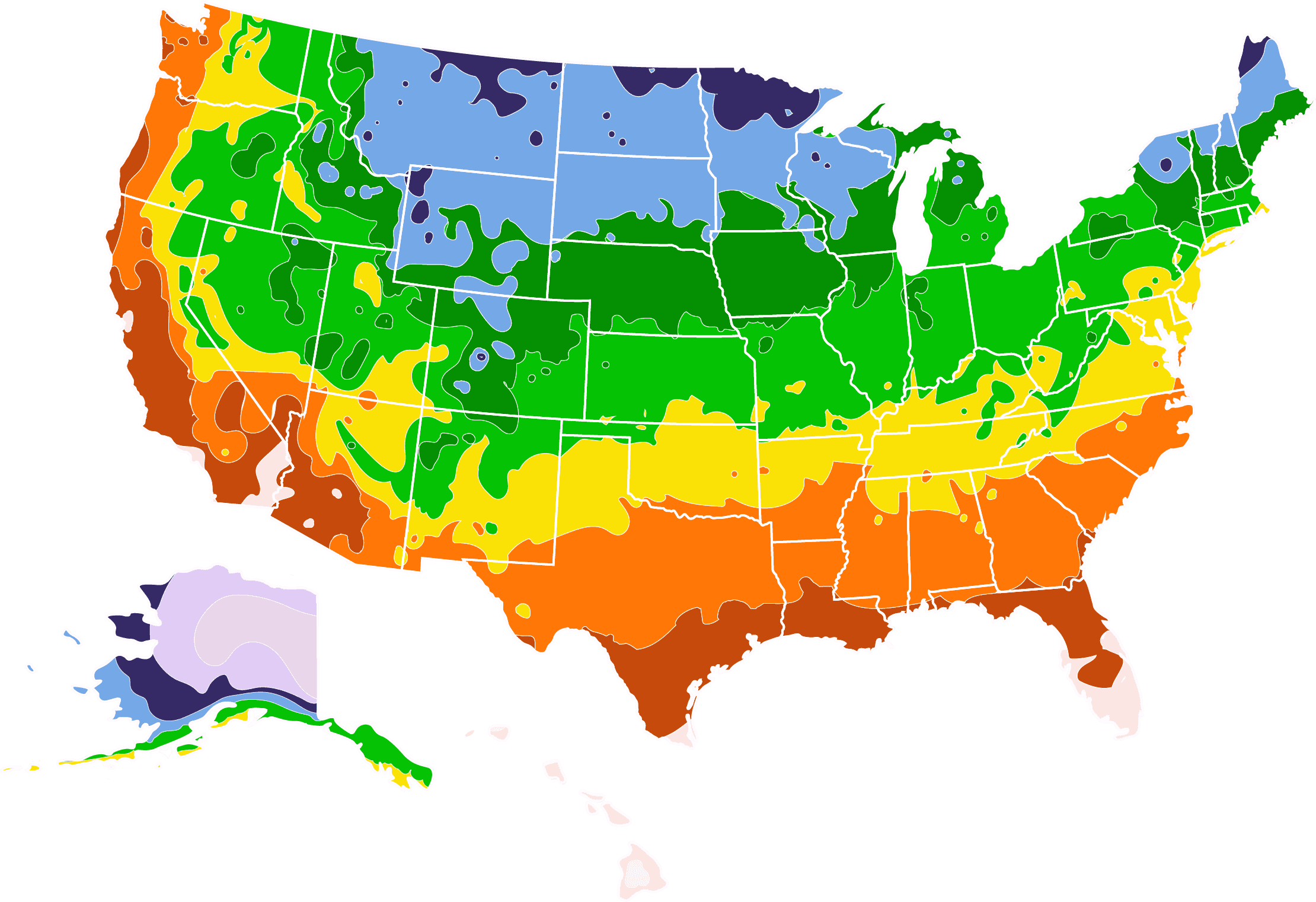- Home >
- Ornamental Trees >
- Shademaster Honeylocust Tree
Shademaster Honeylocust Tree for Sale - Buying & Growing Guide
- Ships in 1-2 days
- 1-Year Warranty Eligible
- Pots or accessories are not included unless specified in the product options.
Shipping Details:
Once your order is shipped, you’ll receive an email with a tracking number and estimated delivery date. Most orders ship immediately, but some items are seasonal and may only ship in spring or fall. These products are noted on the website.
Stately and majestic, a mature Shademaster honeylocust tree, Gleditsia triacanthos var. inermis 'Shademaster,' is a sight to see — especially in fall, when its small, pinnate leaves turn a vibrant yellow-gold. Maturing to a height of as much as 70 feet, the Shademaster honeylocust is the quintessential shade tree, offering a soft dappled shade during the hottest months of summer. One of the best things about the Shademaster honeylocust tree is something that it doesn't have: thorns, which can be long and vicious in some varieties of honeylocust. The Shademaster honeylocust tree has none, making it a solid choice in areas where there are children or passers-by to consider. Here are a few more reasons to add a Shademaster honeylocust tree to your landscape:
- The Shademaster honeylocust tree grows throughout most of the continental U.S., and it is hardy down to -40 degrees Fahrenheit.
- It tolerates urban pollution, making it a good choice for city landscapes.
- It is tolerant of both wet and dry soils, and it can handle sand, loam, or clay.
Plant Care
Sunlight

The Shademaster honeylocust tree loves sun and does best with six hours or more of direct light a day.
Watering
When young, water once a week. For mature trees, supplemental watering should not be necessary.
Fertilizing

The Shademaster honeylocust tree does not require regular fertilizing once mature.
Planting and Care
Planting instructions
Site your tree where it will receive at least six hours of sunlight a day, away from overhead utility lines, and in soil that drains well. The spot you choose should also be at least 20 to 30 feet away from your home or other buildings. Unpot the sapling and tease out any encircling roots, which can girdle the tree and slowly kill it. Dig a hole that’s as deep as the root ball and twice as wide. Place the tree in the hole, spreading out the roots. Fill in around the roots with topsoil, tamping down as you go to eliminate air pockets. Water thoroughly. Apply a 2- to 3-inch layer of an organic mulch, such as bark chips, around the root zone to conserve moisture and hinder weed growth, being careful to keep it from touching the trunk.
Watering and nutrients
During its first year, water your Shademaster honeylocust tree once a week — more if conditions are very dry or hot. Once it is well-established, you can cut back on watering. To see if it needs supplemental water, check the soil 2 inches below the surface. If it’s dry, give your tree a drink. Mature trees with well-developed root systems will rarely need watering. Although your tree doesn’t require fertilizer, you can feed it when young in spring with a balanced, slow-release product designed for landscape trees and bushes if you wish.
Pollination
Although the Shademaster honeylocust tree has small yellow blooms that appear in clusters in early summer, they do not usually lead to seed pods, as is the case with thorned varieties of honeylocust trees. The flowers have a light fragrance, and they may attract pollinating insects.
Pruning
Monitor your tree, especially when young, for broken, diseased, and damaged branches, and prune these out when you see them. Other than this, however, you should not need to prune your Shademaster honeylocust tree. It should naturally assume a strong central leader (trunk) and pleasing, rounded canopy on its own.
Pests and diseases
Insect pests that may be drawn to your Shademaster honeylocust tree include aphids, leafhoppers, and spider mites. Keep your tree healthy so that it can resist infestations, and consider releasing beneficial insects, such as ladybugs, which eat aphids. Few diseases target these trees; they may occasionally show signs of fungal cankers, leaf spot, or powdery mildew. Again, keeping the tree healthy will help it fight off disease pressure.
Achieving maximum results
Your Shademaster honeylocust tree should live for more than 100 years. And for much of that time, it will need little care. The key to ensuring that your tree has a long and happy life, though, is to pamper it when it’s young. For its first few years, until the root system has grown and become established, give your tree a good drink whenever the temperatures rise. During its first years, your tree may be putting on 3 to 4 feet of new growth a year, expending a great deal of energy to grow. Even though fertilizer is not required, you may give it a boost in the form of a feeding with a balanced, slow-release fertilizer to ensure that it has the nutrients needed to allow it to achieve its full potential.
FAQs
Where does the Shademaster honeylocust tree grow?
How big can I expect my Shademaster honeylocust tree to grow?
If planted in optimal conditions, these trees can reach 70 feet in height and width, and they do best when they have adequate room to spread out. Keep in mind, however, that a tree planted in sub-optimal conditions — for example, in partial shade, or in poor soil — may remain considerably smaller.
How is the Shademaster honeylocust tree best used in my garden?
These stately trees are best planted in larger gardens that offer them the room they need to grow to their full height and width. They are frequently seen in public parks, golf courses, and along public roadways for this reason. Consider planting yours as a specimen tree in a spacious front yard, underplanted with flowering shade perennials such as astilbes.
Compare Similar Products
You can't add more Product Name - Product size to the cart.
OK








